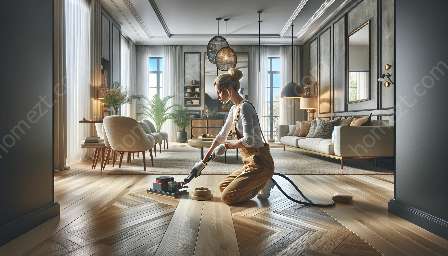As homeowners, safeguarding our homes from external elements and ensuring a comfortable living environment are top priorities. This article aims to demystify waterproofing and insulation techniques, exploring their significance in home maintenance and their contributions to homemaking and interior decor.
Understanding the Importance of Waterproofing and Insulation
Waterproofing and insulation are essential elements of home maintenance, serving to protect your property from moisture infiltration, temperature extremes, and energy inefficiency. By implementing effective waterproofing and insulation techniques, you can preserve the structural integrity of your home and create a cozy, energy-efficient living space.
Waterproofing Techniques
Waterproofing is crucial for preventing water damage, mold growth, and structural deterioration. It entails various methods and materials designed to repel water and moisture, ensuring the longevity of your home's foundation, walls, and roof.
Exterior Waterproofing
Exterior waterproofing involves applying barriers and sealants to the outer surfaces of your home, including foundation walls, exterior walls, and roofs. Common techniques include the use of waterproof membranes, coatings, and drainage systems to redirect water away from the structure.
Interior Waterproofing
Interior waterproofing focuses on protecting the interior spaces of your home, such as basements, bathrooms, and kitchens, from water intrusion. Effective techniques include the use of sealants, water-resistant paints, and proper ventilation to mitigate moisture buildup.
Insulation Techniques
Insulation plays a vital role in maintaining consistent indoor temperatures, reducing energy consumption, and enhancing the comfort of your home. Proper insulation not only contributes to home maintenance but also provides opportunities for creative interior decor and homemaking.
Types of Insulation
There are several types of insulation materials, including fiberglass, foam, cellulose, and reflective barriers, each offering unique benefits in terms of thermal resistance, soundproofing, and fire retardation. Understanding the characteristics of these materials can help you make informed decisions when insulating your home.
Decorative Insulation
Modern insulation materials can be incorporated into interior design, adding both aesthetic appeal and functionality to your living spaces. From decorative acoustic panels to wall-mounted insulation with customizable patterns and textures, homeowners can merge insulation with interior decor, creating a seamless blend of style and practicality.
Tips for Effective Home Maintenance and Homemaking
When considering waterproofing and insulation for your home, it's essential to keep a few tips in mind to make the most of these techniques.
- Regular Maintenance: Schedule routine inspections and maintenance for your waterproofing and insulation systems to identify any issues early and prevent potential damage.
- Energy Efficiency: Proper insulation contributes to energy efficiency by reducing heat loss and minimizing the need for excessive heating or cooling, ultimately lowering utility costs.
- Aesthetics: Explore innovative insulation materials and decorative options to enhance the visual appeal of your living spaces while ensuring effective insulation.
- Professional Assistance: When in doubt, seek professional advice and assistance to ensure that waterproofing and insulation installations are carried out correctly and meet industry standards.
Conclusion
Ultimately, waterproofing and insulation techniques are integral components of home maintenance, offering numerous benefits that extend beyond structural protection. By adopting these techniques, homeowners can create more comfortable, energy-efficient living environments while also elevating the aesthetics of their homes through innovative interior decor.





















